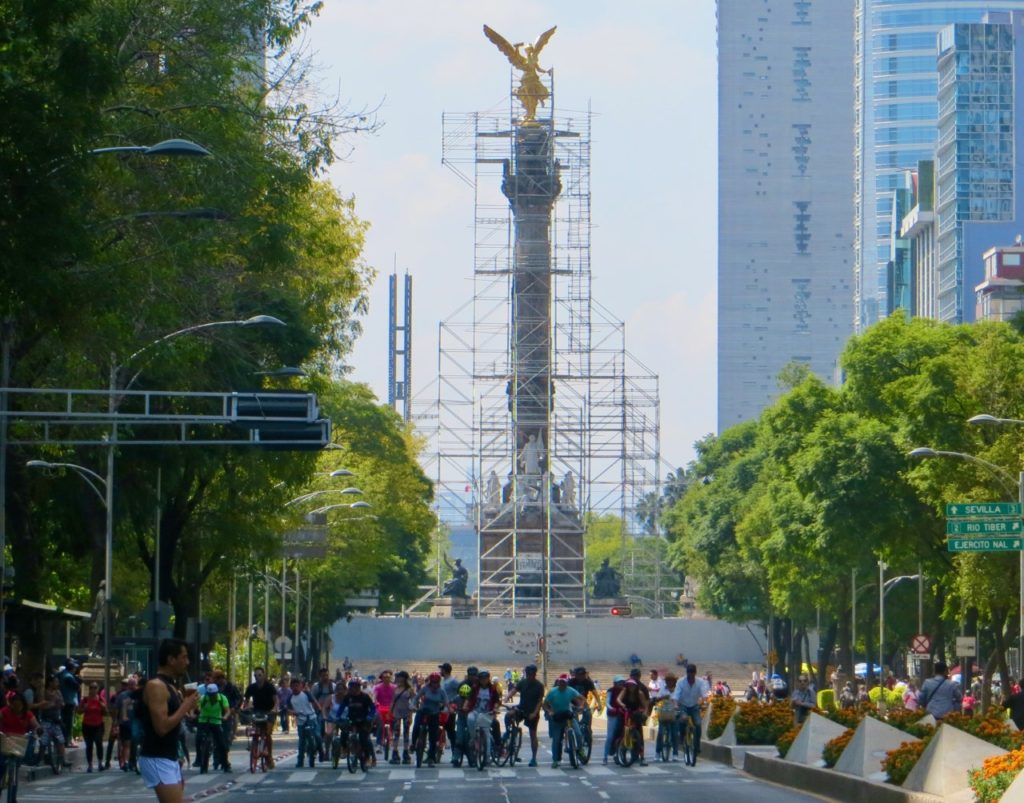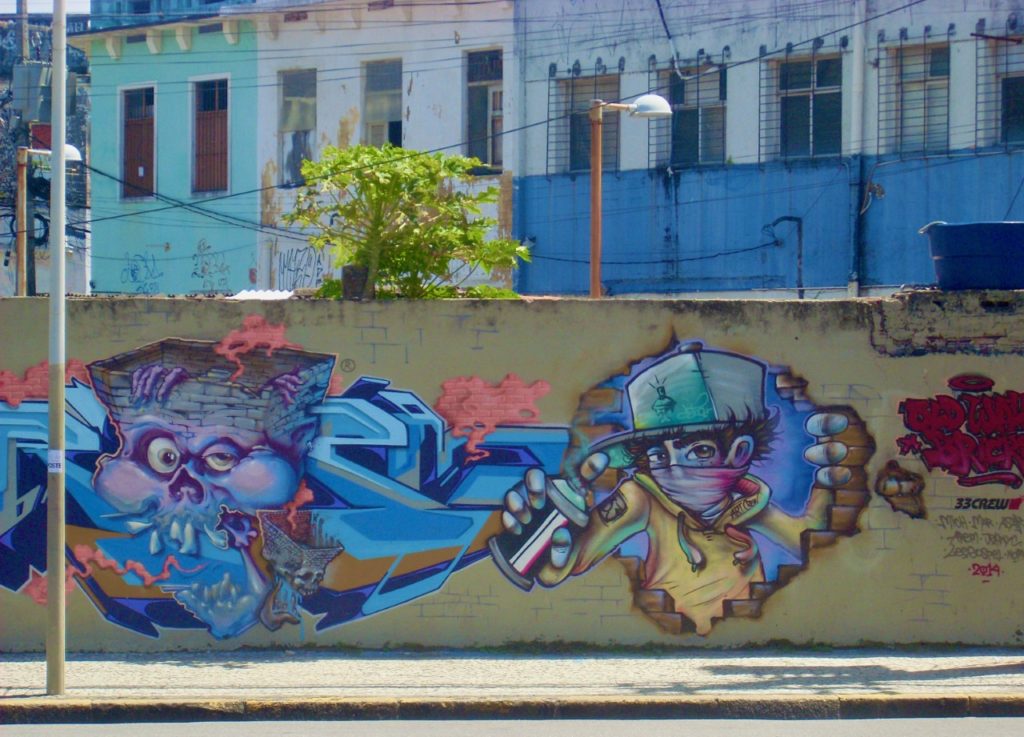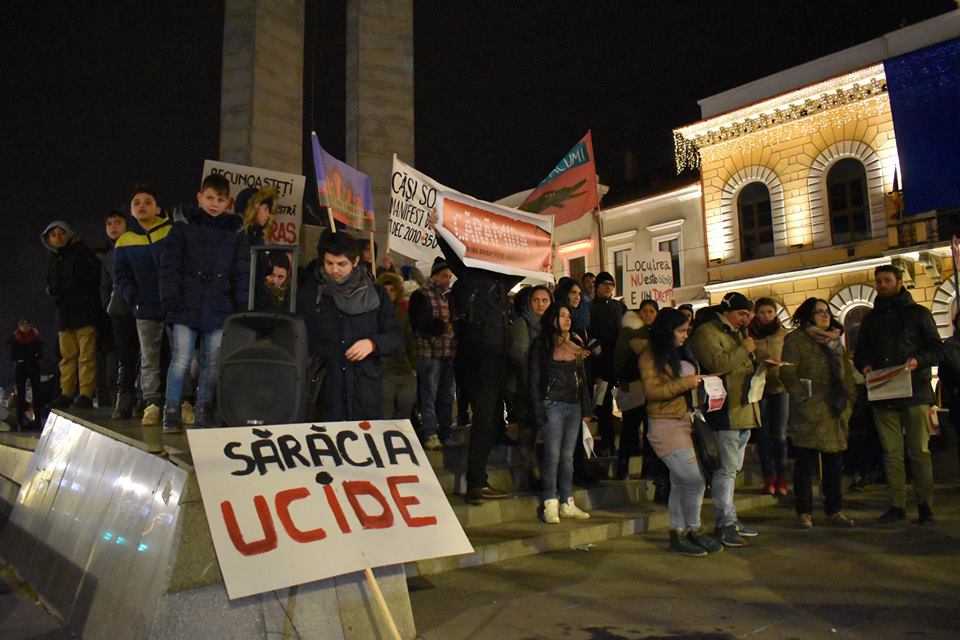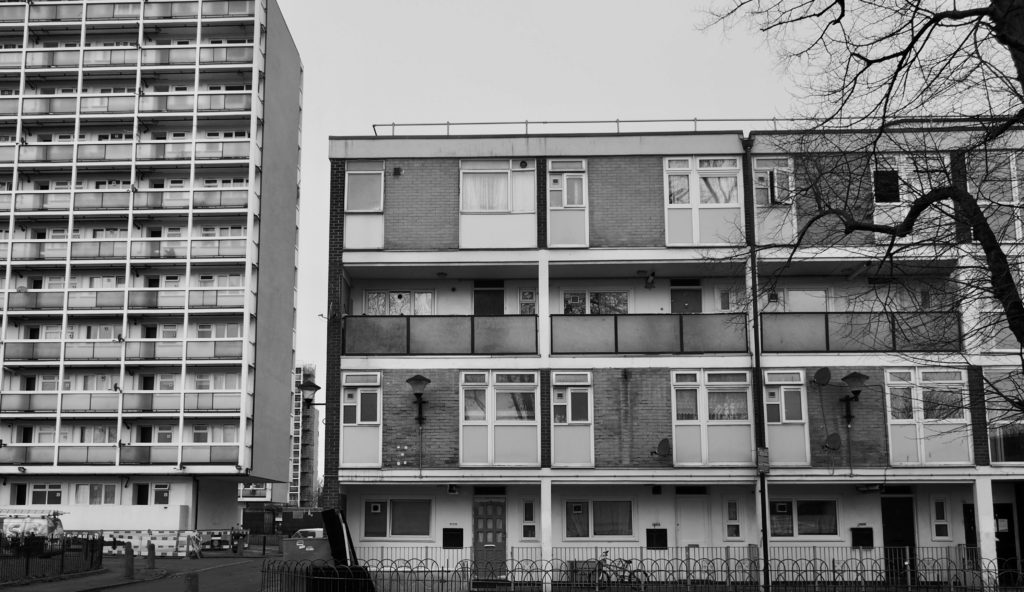This post is part of a feature on “Urban Struggles,” moderated and edited by Raúl Acosta (LMU Munich), Flávio Eiró (Radboud University Nijmegen), Insa Koch (LSE) and Martijn Koster (Radboud University Nijmegen).
Facing family rejection and domestic violence, many transgender (trans) people leave their hometowns especially for large cities in search for greater acceptance and opportunities (Engin 2018). Due to a lack of viable financial means to support themselves and a lack of social acceptance by society, these individuals typically take shelter with urban trans communities (Zengin 2014). In the recent decades, trans communities working in the sex economy have become particularly visible in urban spaces (Çokar and Kayar 2011). However, stigma and hostility towards their gender identity, criminalization and the precarious nature of street-based sex work, punitive institutional practices, and neoliberal urban restructuring have exacerbated their marginalization. In response, trans sex workers have developed various coping and resistance strategies. However, their care networks and practices of resistance are often precarious. Although solidarity persists, violent structural forces produce tensions in their relationships, and hinder the emergence of their collective resistance. This post communicates an ethnographic research that investigates the processes through which the wider forces undermine sex workers’ collective struggles in urban Turkey.
The case study presented here is based on participant-observation and 30 in-depth interviews in an urban neighborhood of a major Turkish city. I collected data from August 2017 to August 2019, during which time I spent an average of six hours a day for six months with sex workers in the streets as they solicited clients and engaged in other everyday activities. In this context, a wide range of identities coexist under the category of “trans.” As used here, the term broadly signifies a person whose assigned sex at birth is male, and who cross-dresses or self-identifies as a woman or with a local or transnational gender-variant term. Most of my research participants self-identify either as a woman or as travesti, lubunya, trans, transseksüel, gacı, or cross-dresser.
Structural violence: Transgender lives in urban Turkey
Sevda, who self-identifies as a travesti, experienced estrangement and ostracism when she first revealed her gender identity to her family. She left her parental home and cut ties with her family members for many years. Struggling with poverty and homelessness, she moved to a larger city that offered her anonymity and enabled her to earn a living in the underground sex economy. Unable to find other employment, she had engaged in street-based sex work for 15 years when I first spoke with her. However, her labor has always been criminalized. The fines she has received for seeking clients in the street have accumulated. And since she has not had funds to pay these fines, her debt has gradually multiplied, reaching the equivalent of two-years rent. On occasion, when Sevda has been unable to earn a sufficient income in inner-city neighborhoods, where she is policed and punished, she has worked in peripheral areas, either along the highway, at bus terminals, or in industrial zones. Without peer support networks in these unsafe and isolated locations, she has faced violence, street harassment, and extortion. On several times, she has been targeted with bottles, stones, lit cigarettes, or water thrown out of car windows. When I first met Sevda, though strong and persistent, she seemed emotionally exhausted from the everyday hassles of her life.
The rights group Transgender Europe notes that “there is no safe country for transgender people.” The statistics from Turkey are particularly worrisome. According to their 2019 report, between October 2018 and October 2019, 331 trans and gender-diverse people were murdered around the world. In Europe, 33 per cent of all murders of trans people occurred in Turkey, with nearly all victims being sex workers. Trans sex workers are especially vulnerable due to the criminalization of sex work and societal transphobia. The violence they experience in Turkey is therefore a manifestation of structural violence (see Galtung 1990).
As in the case of Sevda, the overwhelming majority of trans women in Turkey pursue a livelihood in the sex economy. This is most often due to gender discrimination in the labor market—a fact that distinguishes this group from most other sex workers. In addition, although sex work is legal in Turkey, most trans individuals are excluded from selling sex legally. This is primarily due to their gender identity, but also their citizenship status and age in some cases. While Turkish law does not define prostitution as a crime, all actions required to conduct sex work outside of registered brothels are criminalized, and subject to administrative punishments (Çokar and Kayar 2011). In recent years, there have been rigorous efforts to restrict prostitution by closing down legal brothels, and pushing unregistered prostitutes out into urban peripheries, thereby reducing their visibility. These prohibitive and restrictive measures not only deprive them of safe working environments and economic and social security, but also compromise their access to formal protection channels. For example, the majority of unregistered sex workers do not hold any social security. The most vulnerable trans sex workers are those who work on the streets, or who struggle with poverty, homelessness, or health problems. These are the individuals most likely to get harmed by institutional practices, such as the criminal and administrative sanctions and policing, since many of them engage in “survival sex” (selling sex to meet subsistence needs).
Over the decades, trans communities in large cities have been targeted in collective assaults—often in the form of forced evictions—which have been supported by multiple actors, including extremist nationalist groups, the police, non-trans residents, neighborhood associations, the media, and various state institutions (Bayramoğlu 2013). On the one hand, such evictions have aimed to “cleanse” an area of nonconforming gender and sexual identities (Zengin 2014). On the other hand, they have served to remove marginalized populations, such as trans individuals, sex workers, and migrants, in order to transform low-income areas into profitable neighborhoods through the renewal and gentrification projects (Bayramoğlu 2013). For trans individuals who sell sex and live in these neighborhoods, such evictions have been a process of dispossession (Bayramoğlu 2013) and have devastated their livelihoods, social relationships, and spatial belongingness (Unsal 2015).
From structural violence to interpersonal violence
According to Masse (2014), what brings individuals together in present-day urban social movements is the struggle against precariousness, at work and in the life. Participants in such struggles not only mobilize against economic exploitation, unemployment, and poverty, but also stigmatization, marginalization, criminalization, and exclusion. At the same time, however, the very conditions of precarity, around which people at times collectively mobilize, also generate interpersonal conflicts that undermine their collective struggles. Such is the case with trans sex workers.

Picture 1. Protests were organized over the murder of a trans woman and activist, Hande Kader in 2016 (Illustrated by ttillustrations, 11.06.2020)
Anthropologists have long documented how structural violence translates into interpersonal violence in the lives of socially and economically vulnerable populations (see Auyero 2000; Bourgois 2001). According to their accounts, wider forces, such as political oppression, economic marginalization, and social inequality, produce interpersonal conflicts within marginalized populations (see Bourdieu 1998). During my fieldwork, I often witnessed sex workers quarrelling, criticizing their peers’ appearances, spreading rumors, and on rare occasions, physically assaulting each other. The reproduction of violence in one’s intimate life against oneself or one’s kin, friends, neighbors, and community may follow several paths. For instance, interpersonal violence may be a practical necessity in volatile and illegal street economies that cannot rely on law enforcement for regulation (Karandinos, Hart, Castrillo, and Bourgois 2014). Such is the case in this underground sex economy, where physical and verbal violence in part serves as a mean for social control.
A great deal of the quarrels, ingrained in the language and the culture of the larger queer population in Turkey, are taken as interactional codes among trans people. The contentious nature of these social interactions help them to bond, release tensions, and form alliances. In some cases, however, hostile comments and practices turn self-destructive, harm relationships, and undermine solidarity. A considerable number of ethnographic studies have documented the integration of violence into the moral logics of people’s everyday lives (see Anderson 1999; Bourgois 1995). Accordingly, daily practices and expressions of violence on a micro-interactional level can become normalized in public and private spheres and accepted as a commonsense way to address everyday anxieties (see Bourgois 2001). Interpersonal violence may also arise from a sense of inferiority and powerlessness, intensely experienced during daily struggles for sustenance and self-respect in a hostile world, which may in turn exert a demobilizing effect on vulnerable populations (Bourgois 2001).
Weakening of solidarities and collective resistance
Informal support networks of trans sex workers are not always available to help cope with and counter risks. Even though some sex workers are in deep financial difficulties, money and other material assistance is usually shared only within small and intimate social circles. Social fragmentation, by contrast, is visible even to an outsider. For example, having suffered from severe economic hardship and financial distress for several months, Gamze once voiced her disappointment about her considerably wealthier peers, who worked next-door, “They see my situation. Why don’t they offer any support?” On the contrary, workers commonly express distrust toward their peers. Don Kulick (1998) documented similar patterns of conflicts and distrust among travestis in Brazil. Furthermore, individuals struggling financially are sometimes blamed for their circumstances by their peers—a practice that works to legitimize the social order. In other words, members of marginalized groups may hold themselves and each other responsible for the material effects of structural violence (Bourdieu and Wacquant 1992), thereby hindering solidarity and collective resistance in their communities.
Among the structural elements engendering conflicts and undermining solidarity are the material pressures and tensions arising from precarious labor. In the absence of social security net and other employment, a decline in the number of clients immediately creates financial distress in the lives of many sex workers. In addition, along with a shared residential space, and the friendship and community relations that this entails, trans sex workers also share a work space in the informal sex market that they depend on for their livelihoods. However, the organization of sex labor induces competition in concentrated urban spaces, where everyone must find their own clients. At times, competition may lead to fights over “stealing” others’ clients or working spots. Especially when business is slow, the workers often take note of others’ earnings, which can give rise to heated arguments. There are also vast economic disparities among trans sex workers (Zengin 2014). For this reason, financial struggles are not typically identified as a common challenge that needs to be dealt with collectively.
The divisive and hindering effects of material pressures and competition on workers’ collective struggles have been observed in many labor settings. Significantly, in the lives of trans sex workers, financial pressures are coupled with social and political marginalization. A sense of insecurity resulting from precarious living conditions constrains community mobilization. For instance, trans communities in several neighborhoods in Turkey experienced evictions and attempts at lynching. Furthermore, due to criminalization, the threat and reality of police harassment may disrupt their lives. Given these threats, most sex workers in this neighborhood have restricted their participation especially in visible, confrontational or organized forms of resistance, including political demonstrations and physical resistance to repel the police in the neighborhood. In some cases, sex workers may even disapprove of their colleagues who are involved in contentious collective action, such as protesting a hate crime targeting their peers. Such individuals fear that organizing community mobilization could result in a decline in the number of clients or an increase in policing, thereby negatively impacting their livelihood and placing their lives at risk.
Support networks and community mobilization
In spite of being strained and ridden with contradictions, the informal networks of trans sex workers still provide support, care, and assistance, given that legal protection is limited for many of these workers (Güler 2020). As with working-class women and mothers in marginalized neighborhoods (see Edin and Lein 1997; Koch 2015; Stack 1974), relying on fictive kin for mutual aid and reciprocal exchange remains a central coping mechanism for trans people ostracized from their families of origin for reasons of gender and sexuality (see Weston 1997). In particular, those who have shared housing for many years develop intimate relationships through which they assist each other in difficult times (see Bourdieu 1996; Mauss 1954; Stack 1974).
Likewise, community-based mobilization has been an effective form of resistance against physical violence. In other words, trans sex workers heavily rely on their community for safety. For example, they stay in close contact and stand in the street in groups, warn each other about dangerous clients, coach inexperienced peers, fight back in violent attacks, and at times protest at police stations to save friends (Güler 2020). Safety is thus a pressing concern for many workers and treated as a collective responsibility.
Concluding thoughts
Transgender sex workers in Turkey live and work under difficult circumstances, including pervasive violence, punitive institutional practices, coercive policing, societal stigma and exclusion, and material pressures. On the other hand, powerful organizations promoting trans rights have emerged in recent years at a local and an international level. And trans individuals and sex workers are now more visible and vocal than ever in the streets, at universities, in formal political arenas, and in social and traditional media. In fact, this research was inspired by my admiration for their tenacious resistance to their conditions of marginality, their sense of community, and their willingness to support one another.
However, during my fieldwork, I was repeatedly made aware of rivalries and distrust, failing solidarities, and harm received from fellow peers. Although informal support systems remain crucial resources for coping with and providing a bulwark against risks, the marginalization of trans sex workers continues to constrain their collective efforts while weakening the integrity and solidarity of their communities. Moreover, despite a strong sense of shared identity, dense interpersonal networks, and close attachments among these workers, violent structural forces continue to engender interpersonal conflicts.
Similar challenges have been observed among other stigmatized populations, such as migrants, underground traders, and homeless people, whose lives often depend on the informal economy at the margins of society (see Koch 2018; Menjívar 2000). Ethnographic methods offer opportunities to explore the ways in which precarious, violent, and exclusionary structural forces condition the circumstances of socially and economically marginalized subjects while also rendering their informal networks and collective efforts precarious. To intervene and contest these economic, political, and social forces, we first need to understand the lived experiences of affected individuals.
Ezgi Güler is a PhD researcher in Social Sciences at the European University Institute. She is an urban sociologist who works on social support networks, mobilization, and resistance of sex workers.
Refererences
Anderson, Elijah. 1999. Code of the street: Decency, violence, and the moral Life of the inner city. New York: Norton
Auyero, Javier. 2000. The hyper-shantytown: Neo-liberal violence(s) in the Argentine Slum. Ethnography 1(1): 93–116.
Bayramoğlu, Yener. 2013. Media discourse on transgender people as subjects of gentrification in Istanbul. In Vikki Fraser,eds., Queer sexualities: Diversifying queer, queering diversity, pp. 41-48. Leiden: Brill.
Bourdieu, Pierre. 1996. Unwrapping the gift: On interest and generosity in social life. Colloquium delivered to the Anthropology Department, University of California, Berkeley, April 8.
Bourdieu, Pierre. 1998. Acts of Resistance: Against the tyranny of the market. New York: The New Press.
Bourdieu, Pierre and Loïc Wacquant. 1992. An Invitation to Reflexive Sociology. Chicago, IL: University of Chicago Press.
Bourgois, Philippe. 1995. In search of respect: Selling crack in El Barrio. New York: Cambridge University Press.
Bourgois, Philippe. 2001. The power of violence in war and peace: Post-Cold War lessons from El Salvador. Ethnography 2(1): 5-34.
Çokar, Muhtar, and Habibe Yılmaz Kayar. 2011. Seks işçileri ve yasalar: Türkiye’de yasaların seks işçilerine etkileri ve öneriler. İstanbul: İnsan Kaynağını Geliştirme Vakfı.
Edin, Kathryn, and Laura Lein. 1997. Making ends meet: How single mothers survive welfare and low-wage work. New York: Russell Sage Foundation.
Engin, Ceylan. 2018. Sex work in Turkey: Experiences of transwomen. In Larry Nuttbrock, eds., Transgender sex work and society, pp. 196-213. New York: Harrington Park Press.
Galtung, Johan. 1990. Cultural violence. Journal of Peace Research 27:291–305.
Güler, Ezgi. 2020. A divided sisterhood: Support networks of trans sex workers in urban Turkey. The ANNALS of the American Academy of Political and Social Science 689(1): 149-167.
Karandinos, George, Laurie K. Hart, Fernando M. Castrillo, and Philippe Bourgois. 2014. The moral economy of violence in the US inner city. Current Anthropology, 55(1): 1-22.
Koch, Insa L. 2015. “The state has replaced the man”: Women, family homes, and the benefit system on a council estate in England. Focaal 73: 84-96.
Koch, Insa L. 2018. Personalizing the State: An Anthropology of Law, Politics, and Welfare in Austerity Britain. Oxford University Press.
Kulick, Don. 1998. Travesti: Sex, gender, and culture among Brazilian transgendered prostitutes. Chicago: University of Chicago Press.
Masse, Cédric. 2014. Identities of Portuguese urban social movements: Universality and class heterogeneity, FocaalBlog, October 23.
Mauss, Marcel. 1954. The gift: The form and reason for exchange in archaic societies. London: Cohen and West.
Menjívar, Cecilia. 2000. Fragmented ties: Salvadoran immigrant networks in America. University of California Press.
Stack, Carol. 1975. All our kin: Strategies for survival in a black community. Basic Books.
UNFPA. 2014. Türkiye’de seks işçilerinin cinsel sağlık ve üreme sağlığı durumu: İhtiyaçlar ve öneriler. Available from http://www.kirmizisemsiye.org/SourceFiles/pdf-201852514943.pdf.
Ünsal, Öktem. 2015. Impacts of the Tarlabaşı urban renewal project: (Forced) eviction, dispossession and deepening poverty. In Ö. Öçevik; C.A. Brebbia; S.M. Şener, eds., Sustainable Development and Planning, pp. 45-56. Southampton: WIT Press.
Weston, Kath. 1997. Families we choose: Lesbians, gays, kinship. New York: Columbia University Press.
Zengin, Asli. 2014. Sex under intimate siege: Transgender lives, law and state violence in contemporary Turkey. PhD diss. University of Toronto.
Cite as: Güler, Ezgi. 2020. “Trans Sex Workers’Collective Struggle in Urban Turkey.” FocaalBlog, 27 July. www.focaalblog.com/2020/07/27/ezgi-guler-trans-sex-workers-collective-struggle-in-urban-turkey/




